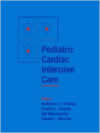All Articles
Animals
Intellectual Property
Arms - Guns - Weapons
International Trade
Audio Forensics
Law Enforcement
Banking
Linguistics
Biokinetics
Manufacturing
Cosmetology: Hair / Makeup
Medical Records Review
Crime Scene Investigation
Metallurgy
Crisis Management
Mining
Dental - Dentistry
Nonprofit Organizations
Design
Oil & Gas
Digital Forensics
Pain Management
Education & Schools
Pharmaceuticals
Employment
Plastic / Reconstructive / Cosmetic Surgery
Energy - Utilities
Pools and Spas (Recreational)
Engineering
Psychiatry
Ethics / Ethical Duties
Psychology
Expert Witnessing
Radiology
Feng Shui
Recreation & Sports
Fires & Explosions
Securities
Forensic Psychiatry
Security
Gems & Jewelry
Sexual Abuse - Molestation - Harassment
Hotels & Hospitality
Taxation
Human Factors
Underwriting
Human Resources
Warnings & Labels
HVAC - Heating, Ventilation, Air Conditioning
Workplace Violence
More...

ACCOUNTING-PAGE ARTICLES MAIN PAGE
. Contact Us if you are interested in having your work published on our website and linked to your Profile(s).
All Articles
Alcohol, Tobacco & Other Drugs
Intellectual Property
Animals
International Trade
Arms - Guns - Weapons
Jails - Prisons - Correctional Facilities
Artificial Intelligence (AI) / Machine Learning (ML)
Law Enforcement
Automotive - Vehicular
Laws & Procedures
Banking
Logistics - Reverse Logistics
Blockchain Information
Marine - Maritime
Business Management
Medical - Medicine
Computer Forensics
Medicine
Computers
Metallurgy
Counseling
Nonprofit Organizations
Design
Nursing
Documentation Examination & Analysis
Pain Management
Education & Schools
Plastic / Reconstructive / Cosmetic Surgery
Elder Abuse
Police Practices & Procedures
Engines (Combustion - Diesel)
Politics
Expert Witnessing
Pools and Spas (Recreational)
Eyewitness Testimony
Professional Malpractice
Feng Shui
Professional Skills
Finance
Public Speaking
Fires & Explosions
Real Estate
Gems & Jewelry
Securities
Hazardous Materials
Slip, Trip & Fall
Hotels & Hospitality
Speech-Language Pathology
Insurance Coverage Analysis
Workplace Violence
More...
Featured Articles
There are no active articles here at this time. Please use the search bar, try another category, or contact us if you would like to contribute an article.
This Article is unavailable. Contact Us
Search articles by title, description, author etc.
Sort Featured Articles
Featured resources
FIGHT BACK: How to Take Back Your...
by Michael Levine
Pediatric Cardiac Intensive Care
by Anthony Chang, MD, et al
Submarine Groundwater
by Lorne G. Everett, PhD, et al
Follow us










